You can add up to 10 email addresses to a Pyrus form. Requests sent to any of these addresses will automatically appear as a ticket in Pyrus.
To add an email address, open the Extentions section in the lower left part of the screen.

Click on the extension’s icon.
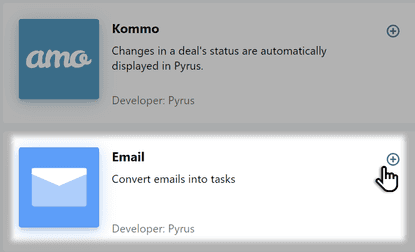
On the page that opens, click Install.
Select the form you need.
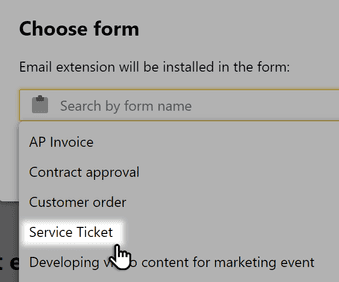
Map the email attributes to the form fields.
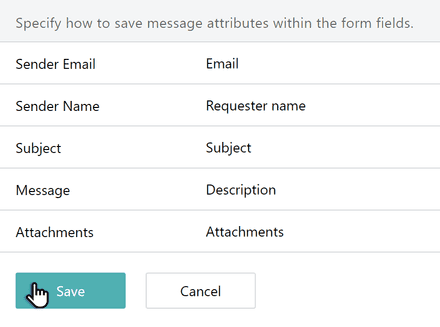
Enter your customer support email address in the Email field, then click on Next. Every request sent to this email address will appear as a ticket in Pyrus.
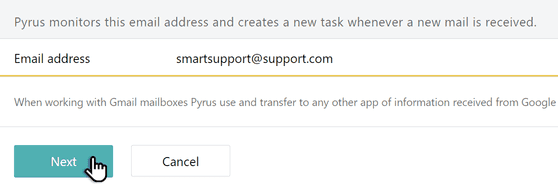
Pyrus will automatically identify your email connection settings, like the address and port numbers for your IMAP/SMTP servers. You should contact your email server administrator with any questions or issues here.
Fill out the password and click Save.
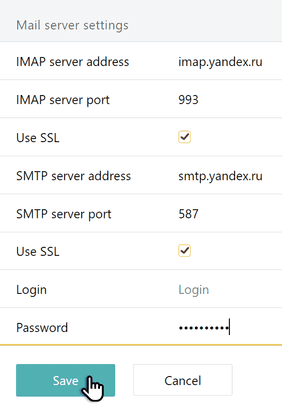
If the information is correct, the connection status will be On. From now on, Pyrus will make tickets from incoming emails at this address. You can turn this off at any time by putting the switch in its Off position.
If Pyrus reports an error, double-check that the email address, password, and email server parameters are correct.
If you’re using a Google email address, you don’t need to enter your server parameters. Instead, you’ll be redirected to your Google account and Pyrus will ask for permissopn to access it. Everything else is configured automatically from there.
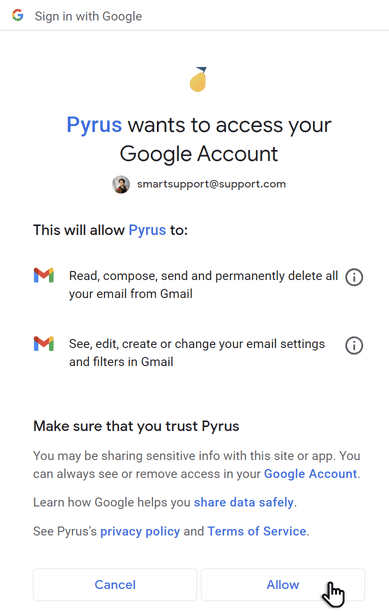
If you manage users with G Suite and want to increase the number of emails they can send, the domain administrator can configure the SMTP relay (outbox message routing from another domain) using this instruction. Use the following parameters to configure the SMTP relay service:
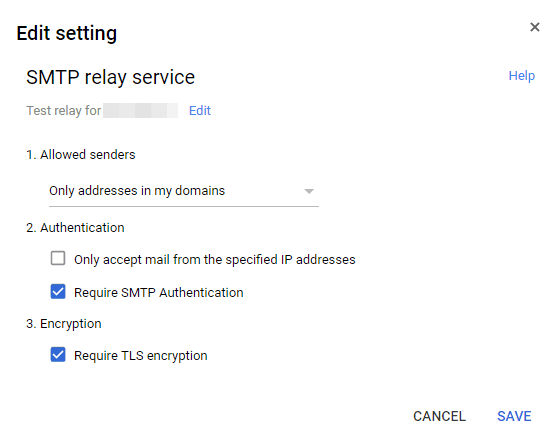
This is a good idea if your support service uses multiple email addresses. One might be for general issues, one might be for API-related questions, and one for mobile-related questions.
You can also configure automatic ticket assignment based on which email the customer is contacting.
Click on Add email address and set it up like you did the existing one. Once again, every client request received as an email to this address will appear in your Pyrus account, no matter which email the client used to contact you.
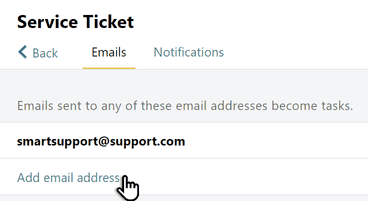
Pyrus Tip: for Microsoft Business email users. Need to enable SMTP authentication for that email address in your Microsoft 365 admin center:
Go to https://admin.microsoft.com/
In the top-left corner of the admin center go to Users > Active users.
Click on the email account that you want to use. This will expand a slide-out with more options.
In the slide-out, go to the Mail tab. Then, click the Manage email apps option.
Check the box for Authenticated SMTP in the list of options. Then, click the Save changes button at the bottom.
How to filter messages that will become tickets in Pyrus
Internal notifications and other messages might appear in your Inbox, but they shouldn’t be turned into tickets. There are two ways to manage this kind of message. First, you might redirect them to another email address. If this is inconvenient, you can set up a special folder for receiving notifications. Pyrus only checks your Inbox, so it won’t turn messages from other folders into tickets.
You can configure folders in all popular email clients like Gmail and Microsoft Exchange.
Creating a new ticket
Sometimes, clients will reach out about a new topic by writing in an old thread. Suppose, for instance, that a client contacted you a week ago because they were having trouble paying for an order. A week later, they might have a different issue - maybe they want to inquire about service terms, so they reply to the same thread as before.
Since this is a new topic, it may be better for your stats to initiate a new ticket. Or, conversely, you may find it more suitable to have all inquiries from a single client go into the same task so that you can see the full history of your exchanges in one place.
The conditions for starting a new request, or continuing to communicate in an old one, can be configured on the extension's settings page. Select the desired scenario by checking the box next to it, and hit Save.

How to automatically change form fields
Suppose you have several email addresses for client requests and support@example.com is specifically for technical issues. To immediately identify those requests, you can configure an autocomplete for the Category field in tasks for emails to this address. You can even route such requests directly to the specialist best equipped to handle them.
To configure autocomplete, go to an extensions page, click on Email.
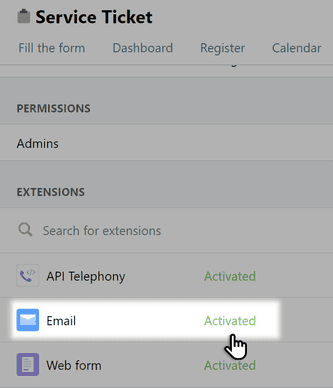
On the Emails tab, click on the address your customers usually write to.
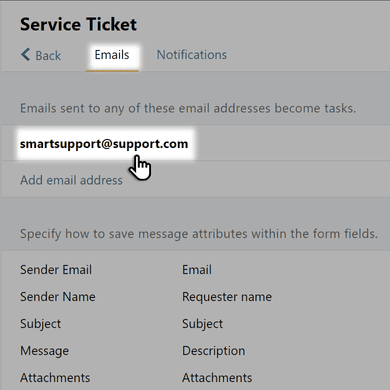
In the Automatically change these fields section, click on Add field and designate the field and the value that Pyrus will automatically put there. In our example, it’s Category — Technical Issue.
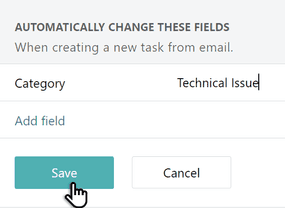
You can configure this for any Catalog and Multiple choice fields.
How to automatically update a ticket status
If you use ticket statuses, you can configure the status to update when your clients reply via email. Suppose a support specialist asked a client some additional questions, changing ticket status to “Request information”. When Pyrus receives an answer, it will automatically change the ticket status to “In progress”.
To change this, go to the Configure tab in the form.
On the Emails page, click on the email address your clients use to contact your company.

In the Automatically change these fields section, add the status that Pyrus will designate when it receives a reply via email.
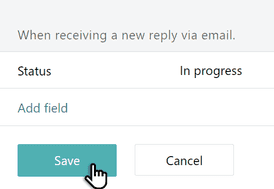
Setting up automatic notifications, sender name and signature
By default, when your clients email you, they receive an automated reply from Support team, informing them their request has been received.
In the extension settings, you can customize the text of the reply your clients will receive when they create a Support request and/or when a request has been filled. The sender’s name and signature for your messages will also be recorded.
- In the General settings block, specify the name of the sender the client will receive messages from. For example, {Company name} support. Pyrus will automatically insert this information in every message you send your client.
You can add more info to your signature: upload a photo or logo, and display a work phone, a ticket number, and/or a number of other parameters.
To add info to your signature, click on the flag with the arrows in the upper panel of the signature settings block, and select the desired parameters from the dropdown menu.


Click Save. The selected data will now be displayed in the signature of every reply the client receives by email.

- You can insert various variables in the text of your notifications, such as: the task number ${task:id}, the value of any field in the form ${field name}, or the name of a colleague ${user:firstname}. These variables will be auto-filled from the client request.

Enter the text of the autoreply and hit Save.

- To turn off automatic replies, put the switch in the position where it turns gray.

How to update email password
Suppose you’ve changed the password for an email account connected to a Pyrus form. When that happens, Pyrus will stop converting emails sent to this address into tickets. You will see the number of forms that lost their connection to a designated email account in a red circle next to Forms in the left menu.
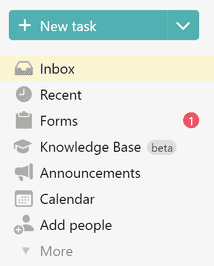
You will also see the warning near the form needing to be reconnected to an email.
To get things working normally again, update the connection to the email.
- Open the form settings. In the Extensions section click Emails.
- Click on the disconnected email address.
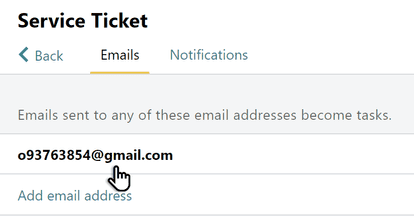
- If your email provider is Google, click on the Update authorization button. The password will update automatically.
 For other email providers, add new password in the Mail server settings section.
For other email providers, add new password in the Mail server settings section. 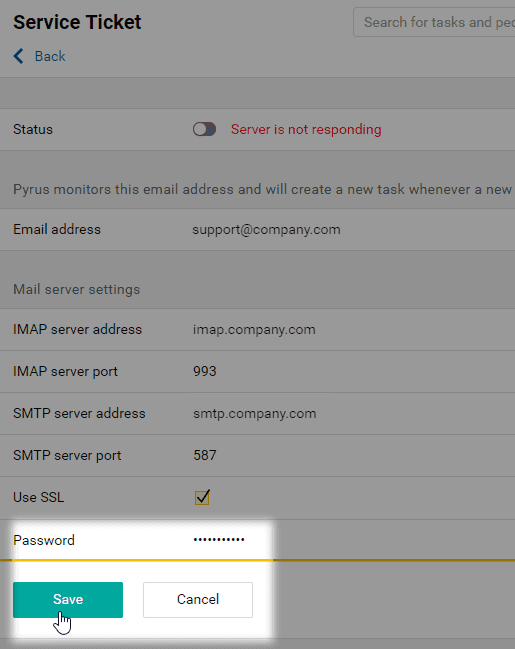
- If there are messages that haven’t been converted into Pyrus tickets, you will see a message asking if you want to process them.
